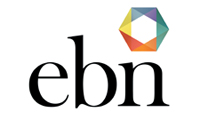
Recently I was talking to a new contact. We had met at a networking event, connected on LinkedIn and he suggested we have a 1-2-1. Lovely, that’s how you build business relationships.
When we started to talk he said that he hardly did any networking because his company was so big that businesspeople he met owned businesses that were too small to pass work to him. I was a bit surprised since he seemed to have misunderstood what networking is all about.
If you read my blog – What is networking all about? ( https://www.ebn.uk.com/blog/?p=169 ) I talk about the advice, information and support that you get from networking. One thing I didn’t mention was the business that happens when you network and this is the part that my new contact seemed not to understand. The amount of business you and I can do may be limited, unless you are a purveyor of fruit scones when I may be a very regular customer. If, however, you are a mortgage advisor I either need a mortgage or I don’t and, if I do, it could be a while before I need one again. However, I may know people who need a mortgage and these are the people you want to be introduced to. You know me and through me you potentially know my contacts.
So, what about my contacts. Well,
- I am not a man, but I know men,
- I am not young (Honestly, hard to believe isn’t it?) but I know young people,
- I am not a tall person, but I know tall people,
- I am not the owner of a large company, but I know people who own large companies, and
- I am not a millionaire (yet) but I know a few millionaires.
So my new contact is missing this point. If we build a strong relationship then you may meet my contacts and you don’t know who I know.
Have fun
Glenys









Recent Comments